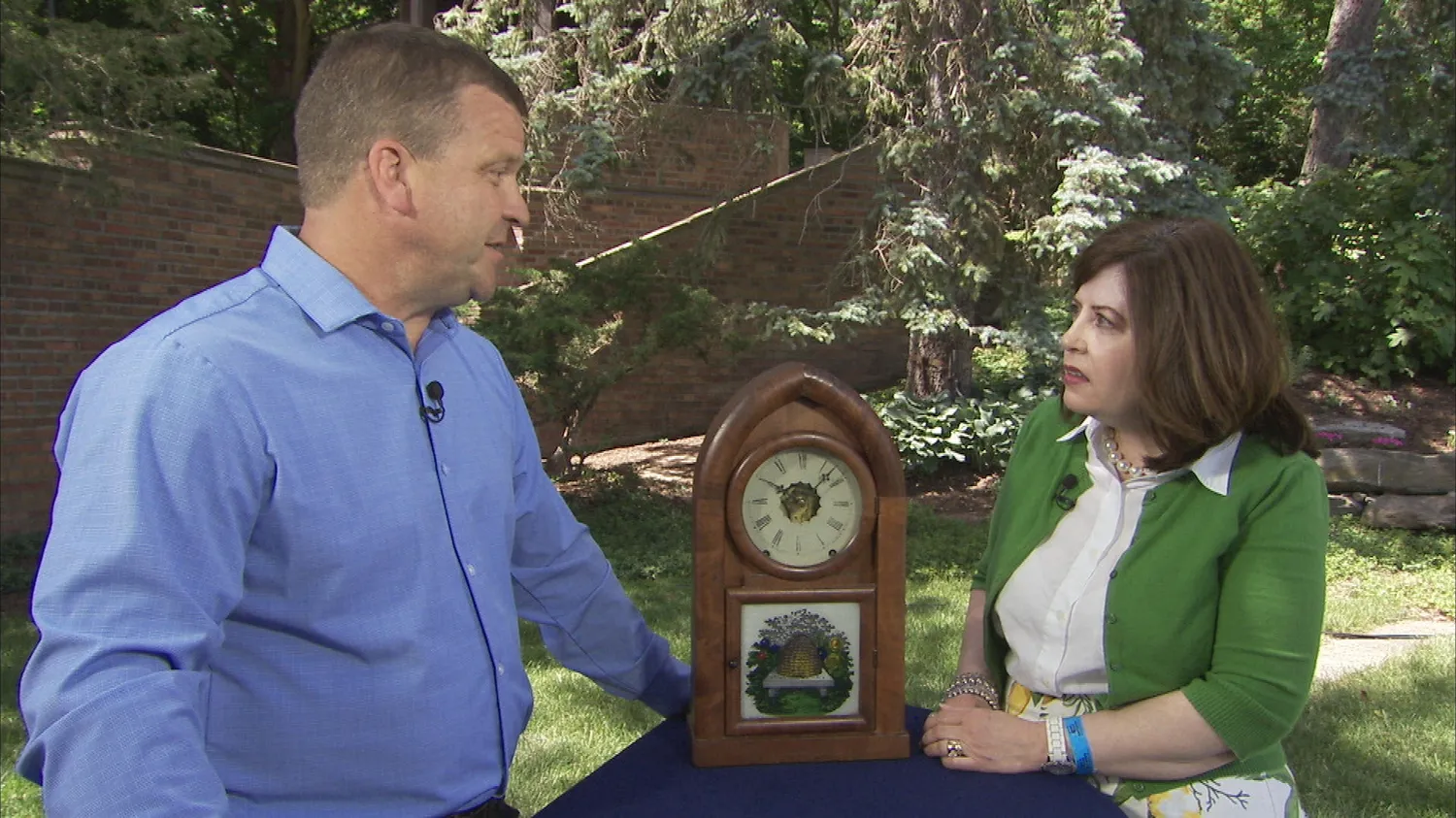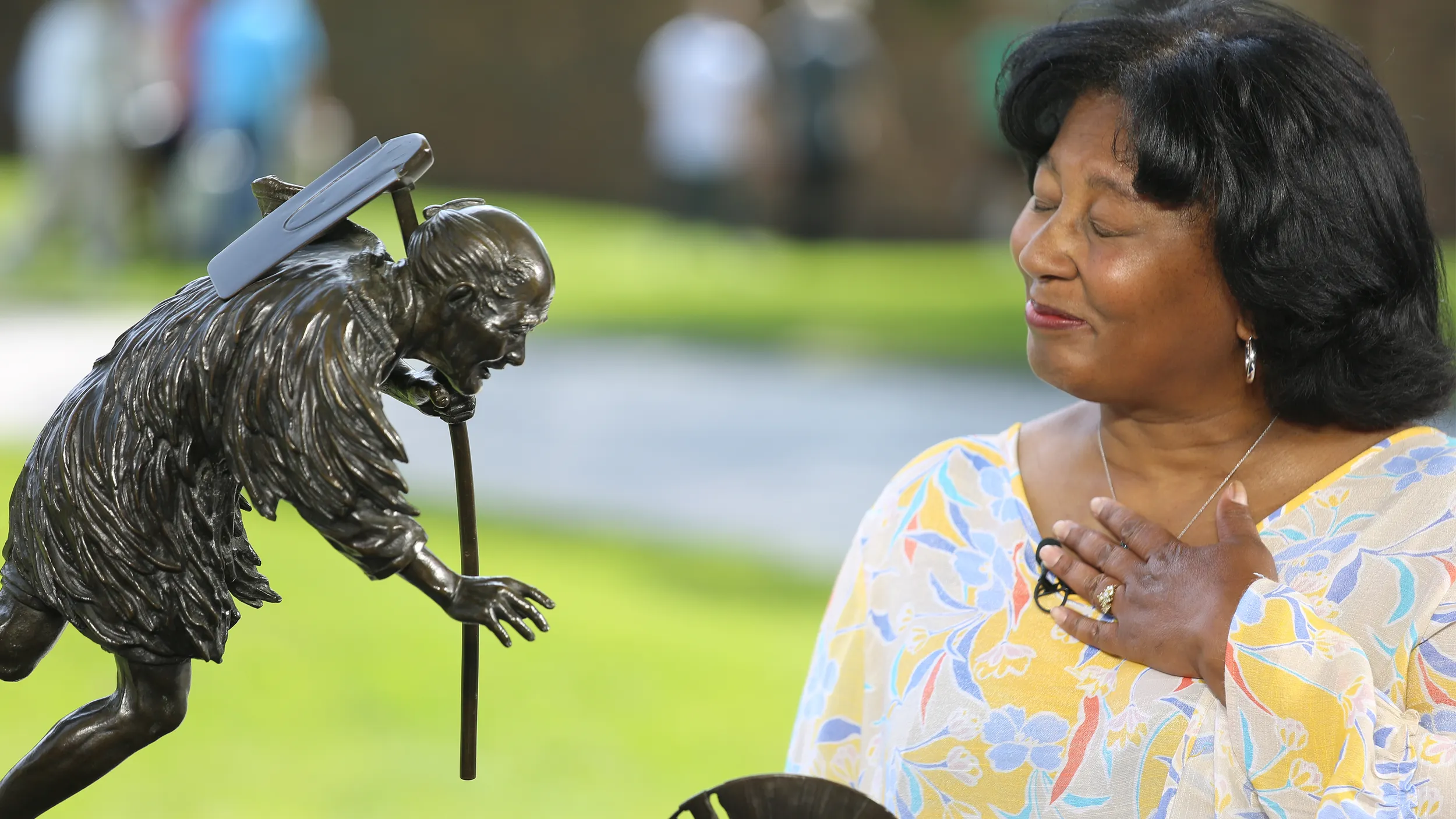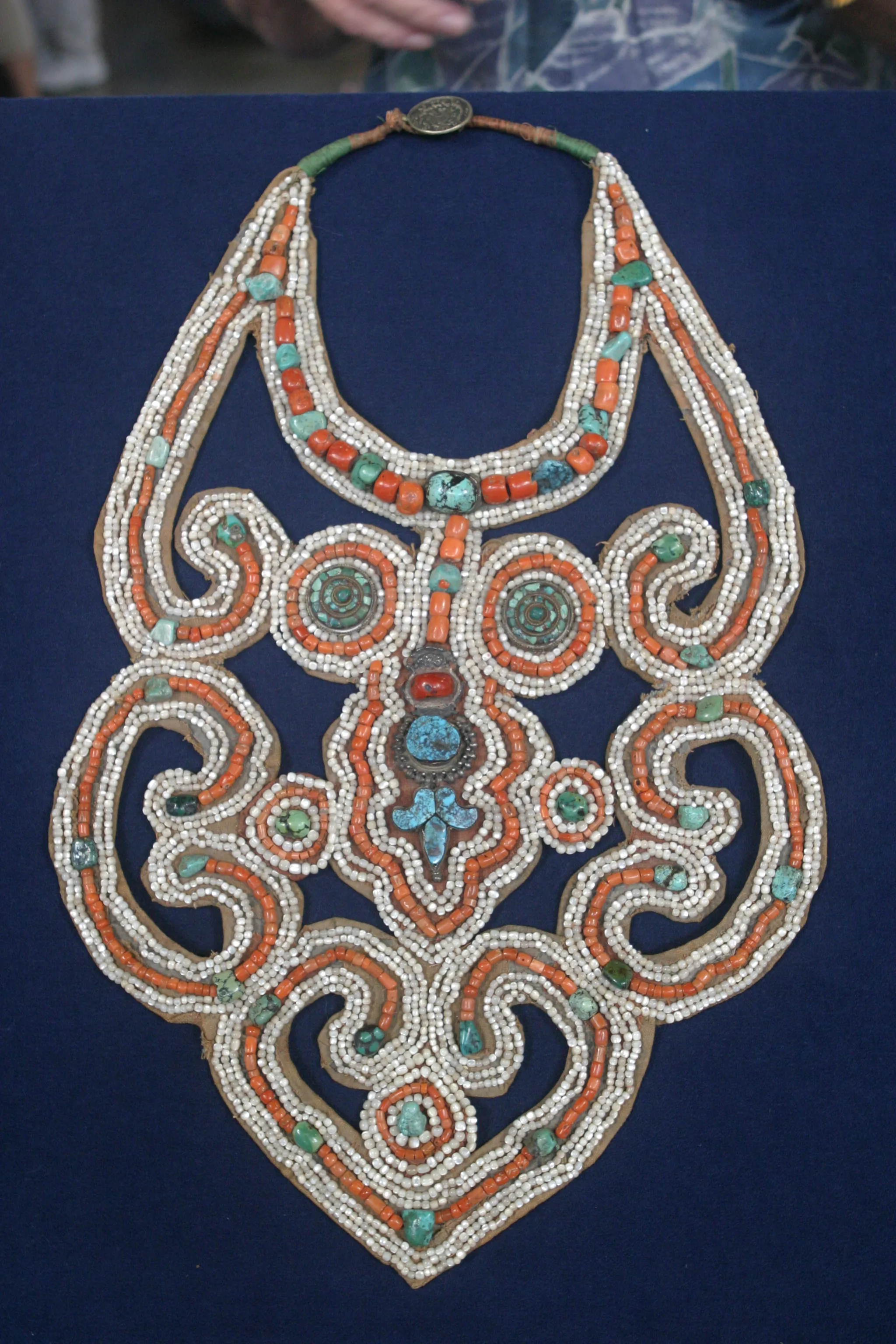GUEST: My great-uncle collected clocks over the years, and when he passed away, my great-aunt told me I could choose one of the clocks from his collection as a memento of him.
APPRAISER: It's called a beehive clock.
GUEST: Okay.
APPRAISER: For obvious reasons.
GUEST: Right.
APPRAISER: The form of the clock is in a beehive, But what I like most about it is it has this beehive glass. A lot of people refer to that as beehive, but it's called a skep, which is a manmade beehive. This clock was made by the New Haven Clock Company, and they were in business from 1853 to 1946. And this clock would have been made circa 1870.
GUEST: Wow.
APPRAISER: It's a mahogany case. And if you open the door here, you have access to remnants of the original label, but it has the original dial. What it doesn't have is that this was originally an alarm clock. And it would have an alarm mechanism mounted right here. And there would be a disk right here that you would rotate the numbers, and it would ring, and it would sort of shake the house, because it's like a fire alarm.
GUEST: Yeah.
APPRAISER: It doesn't stop until that spring loses all its tension. But, honestly, that's not a big deal in terms of it not having its alarm.
GUEST: Okay.
APPRAISER: A lot of these clocks don't, and they're pretty accessible to get, so it's really not that big of a deal. But one of my favorite things about this clock is a mouse lived in this clock for a while, and it's kind of neat that it could get in and out of the clock without the door being open. And you can't see it from the front, so I don't really think it hurts the value of it at all. It is a mass-produced clock, but it is a great example, in my opinion, because of the glass.
GUEST: Okay.
APPRAISER: And a clock like this in a retail situation would sell for around $600.
GUEST: Oh, okay.
APPRAISER: Yeah.
GUEST: Great.









